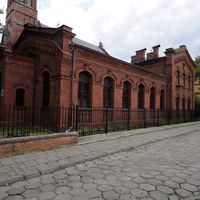Żyrardów
7.21

Overview
Żyrardów is a city located in the Masovian Voivodeship, part of the Warsaw metropolitan area. Its history dates back to 1833, when a linen goods factory was relocated to Ruda Guzowska. The development of the factory was closely tied to the name of Filip de Girard. Żyrardów quickly became a major industrial center, particularly in linen production, and grew to become the largest such factory in the Polish Kingdom and Europe until the outbreak of World War I. During the interwar period, the city faced economic difficulties, especially after the factory was taken over by a French consortium. World War II brought significant suffering to Żyrardów, and its Jewish community was almost entirely wiped out. After the war, the city gained new industrial plants, including the Linen Industry Plants, as well as the Museum of the Workers' Movement. In the 21st century, Żyrardów has invested in infrastructure development and the preservation of its cultural heritage; the Factory Settlement was designated a Historic Monument in 2012. Architecturally, the city is characterized by 19th-century buildings, most of which have retained their original function. It is worth noting that Żyrardów was the site of numerous workers' strikes, earning it the nickname "The Red City." The city is home to various religious communities and educational institutions, including high schools and art schools. Żyrardów is also known for its football traditions, with the club Żyrardowianka active since 1923, as well as for its successes in cycling. The city cooperates with numerous partner cities, and its cultural attractions include the annual Linen Festival, which celebrates local industrial traditions. An interesting fact is that Żyrardów is home to Pomona Company, the first Polish manufacturer of shock absorbers, and the producer of the globally renowned Belvedere vodka also has its facilities in the city.
Location
2025 Wizytor | All Rights Reserved



